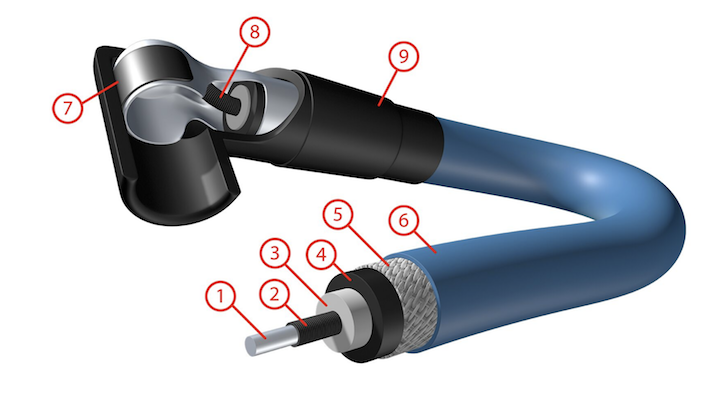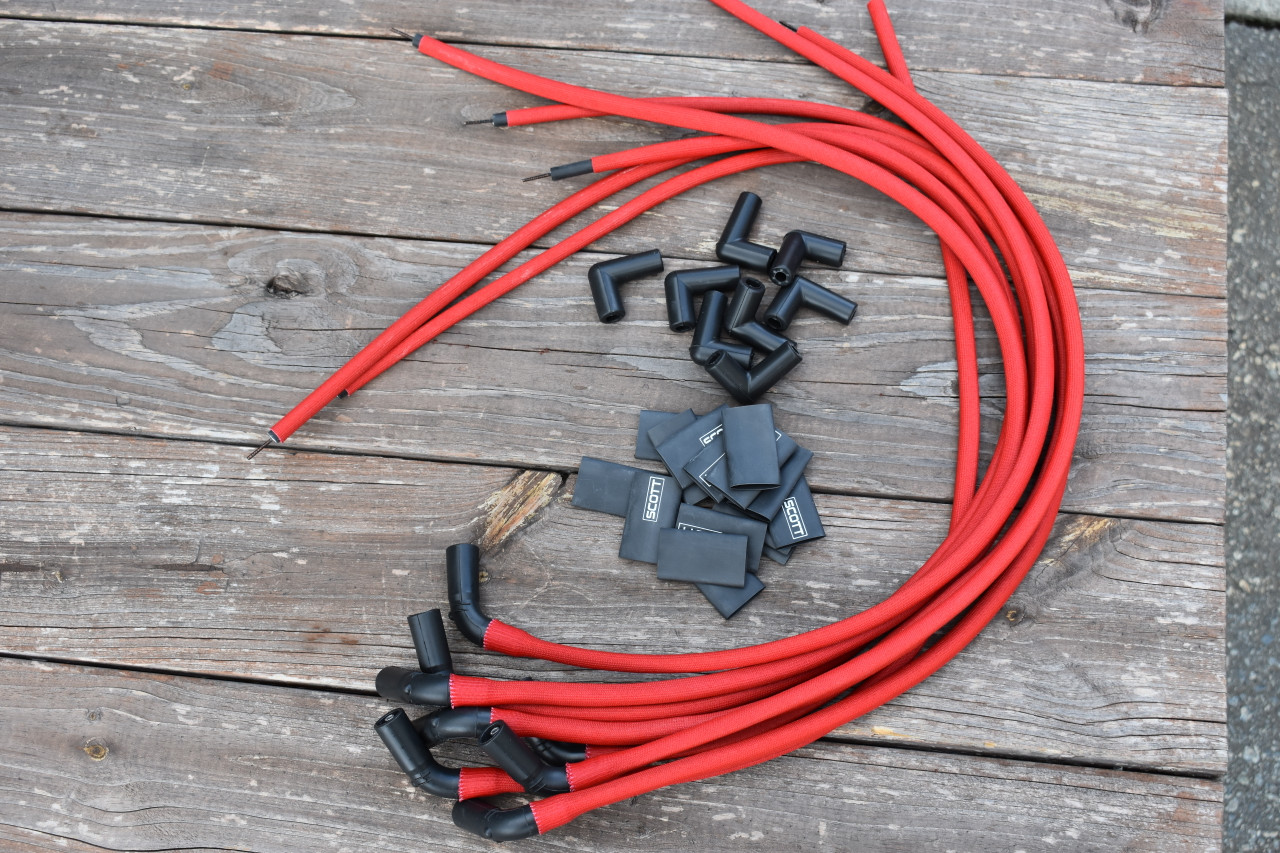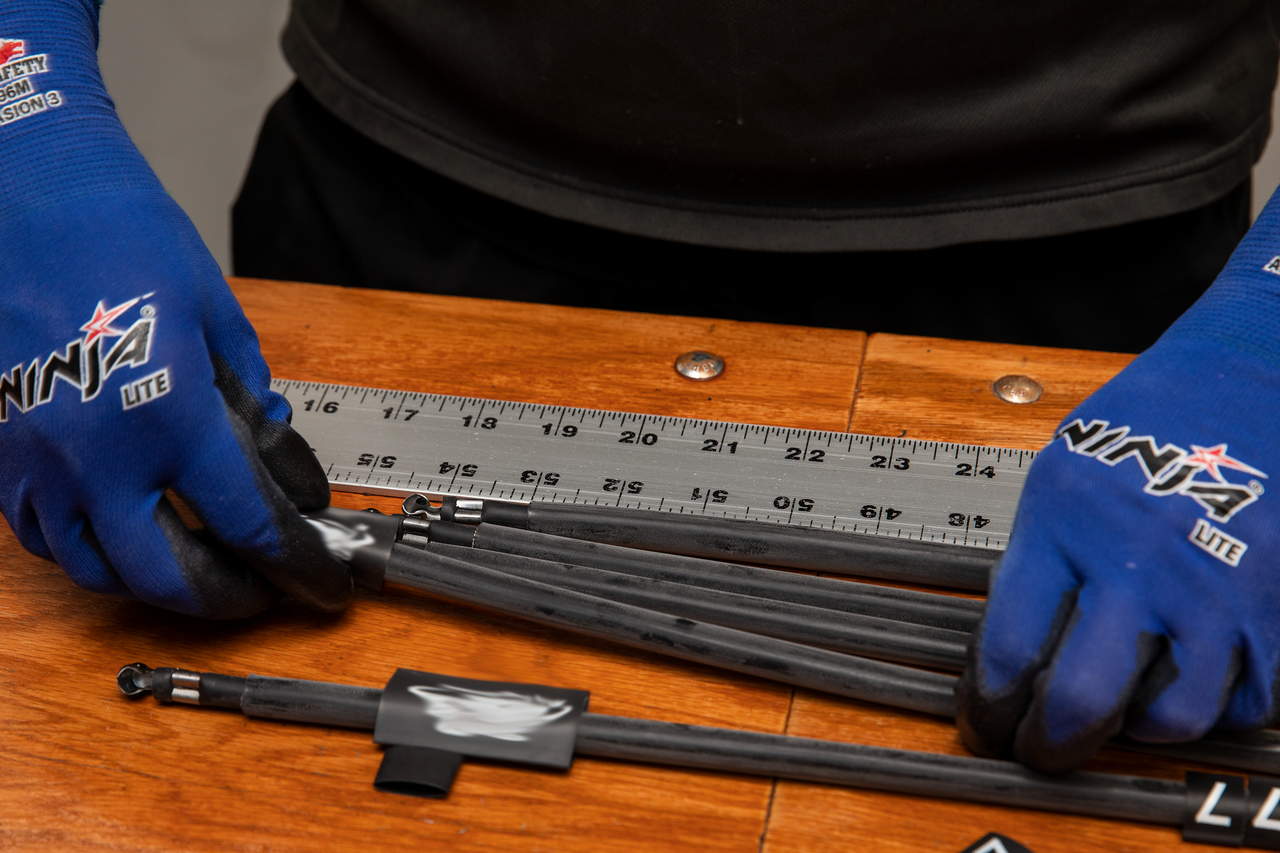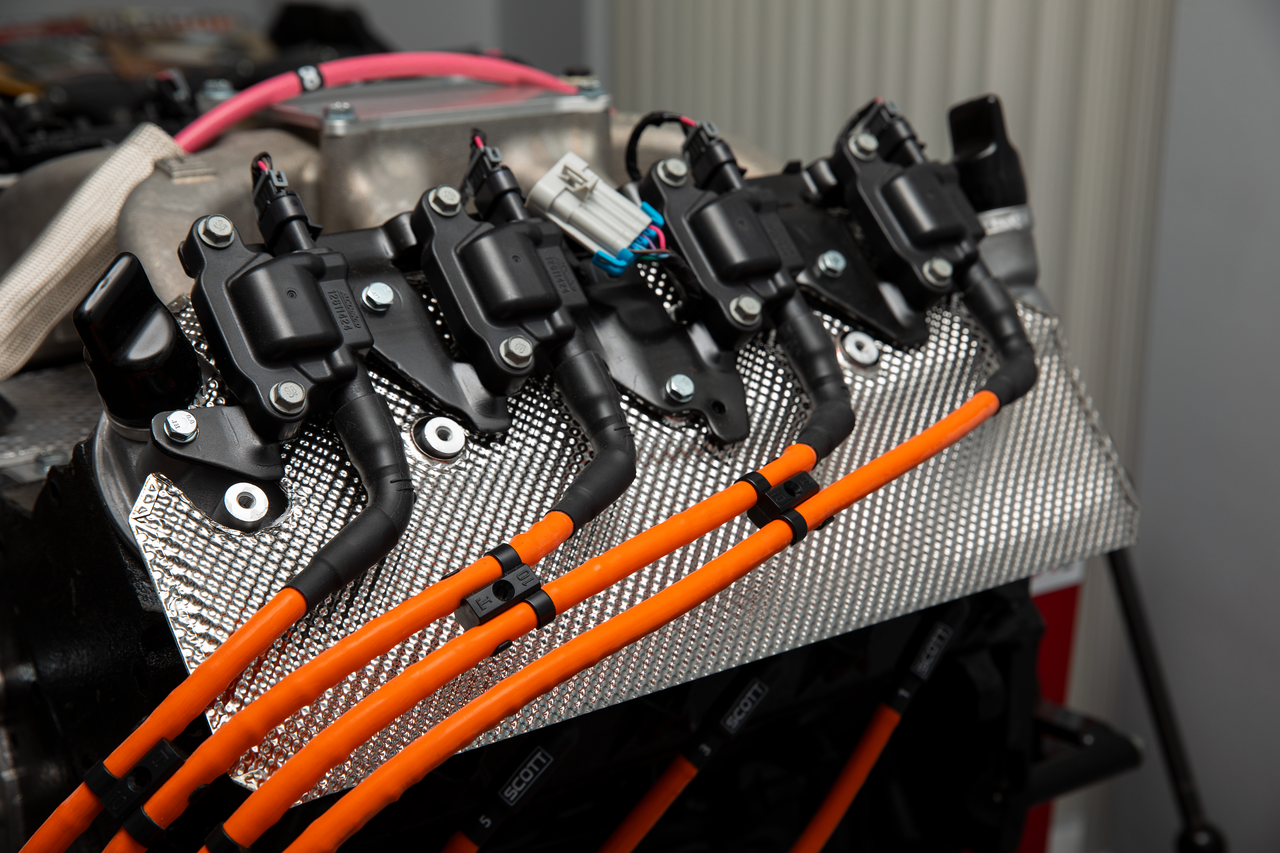Everything You Need To Know About Spark Plug Wires Part One
Posted by Scott's Performance Wire on Dec 29th 2022
What makes up a spark plug wire and what makes a wire good?
Building a project car can be a very long and arduous process that includes a myriad of parts purchased, hours of research conducted, and the occasional tear shed. One of those struggles may be to find quality spark plug wires that will work for your project or race car. Through this article, and the start of this series we will explore the differences in spark plug wire sets and why having high-quality spark plug wires on your hot rod matters.
- To learn more about the theory and design of spark plug wires and more about how inference in wires occurs check out our other tech article on wire performance optimization.
What is a spark plug wire?
The construction of almost all spark plug wires is essentially the same. Each wire starts with a central core and then has a conductive suppression layer of insulation, followed by a fiberglass middle braid that is shielded by an outer silicone jacket. This outer layer's main job is to protect the wire and to also prevent arcing. From there the metal clips are crimped to each side and the proper boot is installed over it to make the complete wire.

1. Fiberglass/Aramid (Kevlar®) Blend Ferrite Coated Core
2. Stranded Alloy - TPI (Turns P/Inch) Determined by Wire design
3. Silicone Inner Core for Strength, EMI/RFI Control and Break-down Voltage
4. Silicone Outer Core for Abrasion and Heat Resistance
5. Fiberglass Sleeving Rated @ 1000˚F
6. Additional Silicone Sleeving on Scott Wires Provides Added Protection Against Heat and Abrasion
7. Stainless Steel "Snap-Lock" Tab for Positive Lock to Spark Plug
8. Bend Crimp for Ultimate Termination
9. High Temp Silicone Boot and Heat Shrinks for Added Protection
Are spark plug wires all the same?
Solid Core Spark Plug Wires
Solid core wires are, like the name implies, twisted metal wires inside the shielding, these were the common wire found on most vehicles prior to the 1960s. They work very well because they offer very low resistance.
As electrical systems became more important and more complicated in cars from the early ’60s (i.e. high output radios, EFI, etc) the solid-core style wire can produce electronic issues that are known as Electromagnetic Interference (EMI). EMI, more commonly known as noise, can cause a long list of issues, especially in modern EFI vehicles that include false readings on gauges, sensors, and even the radio and can lead to improper functioning of electrical systems throughout the car.
Older classic cars and non-EFI race cars still use solid-core, but there are more viable options.
Carbon Core Spark Plug Wires
Following solid core, a new design was created to help solve the EMI issues that solid core wires brought. Carbon core wires also can be known as spiral core wires, these are now the go-to wire for many car enthusiasts as they are readily available and work great for almost every application. They offer low noise or EMI issues and easily allow you to run other electronic accessories such as a radio or sound system worry-free.
They also do a great job with keeping resistance low and allowing the full spark of your ignition system to the spark plug. Virtually every plug or coil wire we make is a spiral core design and they work great on everything from a street car with a 5.3 LS engine to a race-ready NASCAR engine.

Spark Plug Wire Thickness, Does Size Matter?
When it comes to spark plug or coil wires, it depends on the application's intended purpose, they really can have an effect on ignition performance. Companies offer 7,8,8.8 and 10-mm thicknesses for wires, however, the inner core is the same on each diameter regardless, so performance doesn't actually change.
What Are The Benefits of Thicker Spark Plug Wires?
The different sizes are to supply different levels of heat and wear protection. So the optimum size can depend on the heat level, location of the wire, and proximity to electronics, as the insulation can protect against excessive noise.
Does the resistance of a spark plug matter?
We discussed earlier a little bit about the resistance of a spark plug wire. Resistance in a spark plug is what we test to see if a wire is good or not. The lower the resistance means the more energy that can pass through it therefore the better the wire. Typically you measure resistance in ohms per foot, with OEM wires reading around 3,500 to 4,000 ohms of resistance per foot, while performance wires can read ohms of resistance or less.
What We Offer Here At Scott Performance Wire:
Our engineering team here at Scott Performance Wire has over 45 years of experience in motorsports and high-performance technology. We provide racing spark plug wires to winning NASCAR and NHRA teams. The knowledge we gained working in the competition motorsports environment allows us to bring the best high-performance spark plug wires possible to you.

High-Quality Design
We offer wire thicknesses of 8.5 to 10mm and all offer excellent noise suppression that also has additional silicone sleeving to have high-temperature heat resistance that’s rated up to 1,000 degrees Fahrenheit. Ensuring you have some of the most heat-resistant spark plug wires available!
Industry Leading Technology
Our wires also contain “snap lock” technology made with stainless steel tabs that give a very definitive feel, much better than other cheaper plug wires and make for an easy installation and help remove a lot of guesswork that we all know can be a pain sometimes.
Low Resistance Performance Wires
For our wires, we offer a spiral core design that brings very low resistance. We also test each one of our wires after we build them to ensure that we give you the best quality and performance from the start.
We Offer Spark Plug Wires For Almost Any Application!
We offer a variety of spark plug wire kits, everything from style classic small block Chevy wire sets to more modern import and LS coil pack wire sets. And unlike your normal pre-made sets, we offer custom spark plug wire sets that can be tailor-made to your application through different degree angles of the boot to lengths and colors.
Making our wires some of the best spark plug wire sets on the market and a virtual no-brainer if you want to get the most reliable and best-performing investment you can make for spark plug wires. So be sure to check out our website and get the most out of your ignition system with our spark plug wires!

References and definitions:
Electromagnetic compatibility (EMC) is the ability of electrical equipment and systems to function acceptably in their electromagnetic environment, by limiting the unintentional generation, propagation and reception of electromagnetic energy which may cause unwanted effects such as electromagnetic interference (EMI) or even physical damage in operational equipment.[1][2] The goal of EMC is the correct operation of different equipment in a common electromagnetic environment. It is also the name given to the associated branch of electrical engineering.
EMC pursues three main classes of issue. Emission is the generation of electromagnetic energy, whether deliberate or accidental, by some source and its release into the environment. EMC studies the unwanted emissions and the countermeasures which may be taken in order to reduce unwanted emissions. The second class, susceptibility, is the tendency of electrical equipment, referred to as the victim, to malfunction or break down in the presence of unwanted emissions, which are known as Radio frequency interference (RFI). Immunity is the opposite of susceptibility, being the ability of equipment to function correctly in the presence of RFI, with the discipline of "hardening" equipment being known equally as susceptibility or immunity. A third class studied is coupling, which is the mechanism by which emitted interference reaches the victim.
Interference mitigation and hence electromagnetic compatibility may be achieved by addressing any or all of these issues, i.e., quieting the sources of interference, inhibiting coupling paths and/or hardening the potential victims. In practice, many of the engineering techniques used, such as grounding and shielding, apply to all three issues.
(https://en.wikipedia.org/wiki/Electromagnetic_compatibility)
Electromagnetic interference (EMI), also called radio-frequency interference (RFI) when in the radio frequency spectrum, is a disturbance generated by an external source that affects an electrical circuit by electromagnetic induction, electrostatic coupling, or conduction.[1] The disturbance may degrade the performance of the circuit or even stop it from functioning. In the case of a data path, these effects can range from an increase in error rate to a total loss of the data.[2] Both man-made and natural sources generate changing electrical currents and voltages that can cause EMI: ignition systems, cellular network of mobile phones, lightning, solar flares, and auroras (northern/southern lights). EMI frequently affects AM radios. It can also affect mobile phones, FM radios, and televisions, as well as observations for radio astronomy and atmospheric science. (https://en.wikipedia.org/wiki/Electromagnetic_interference)
e.g., A.W. Martin, "Car Radio", The Institution of Automobile Engineers, 1933. Comments on paper reprinted in Proceedings of the Institution of Automobile Engineers, V.39, No. 4, pp 167-177, 1933.

